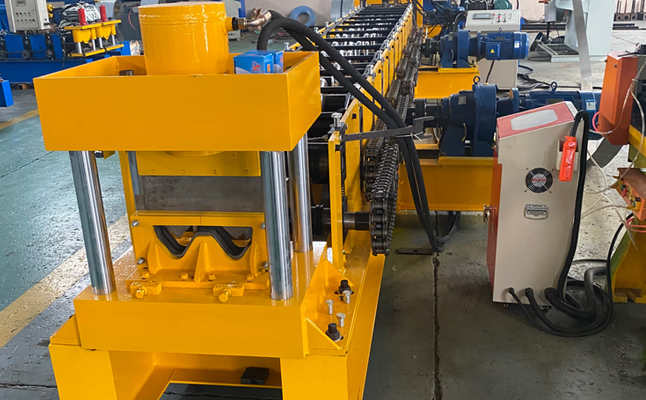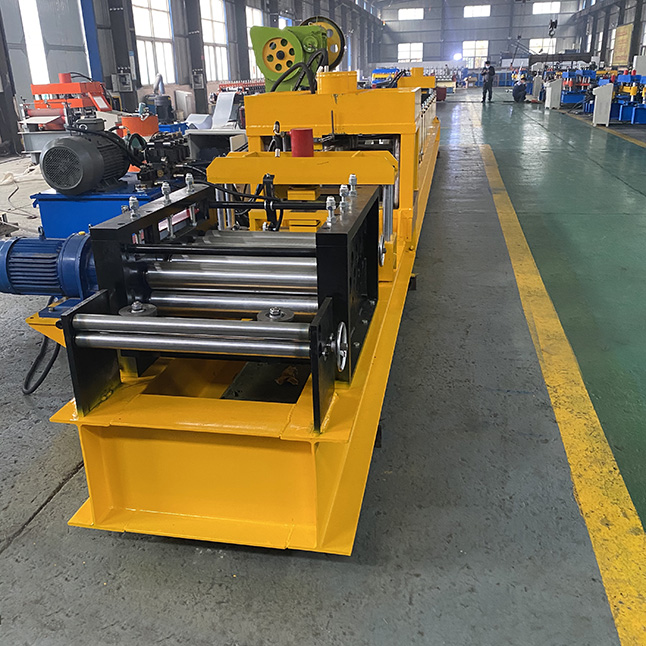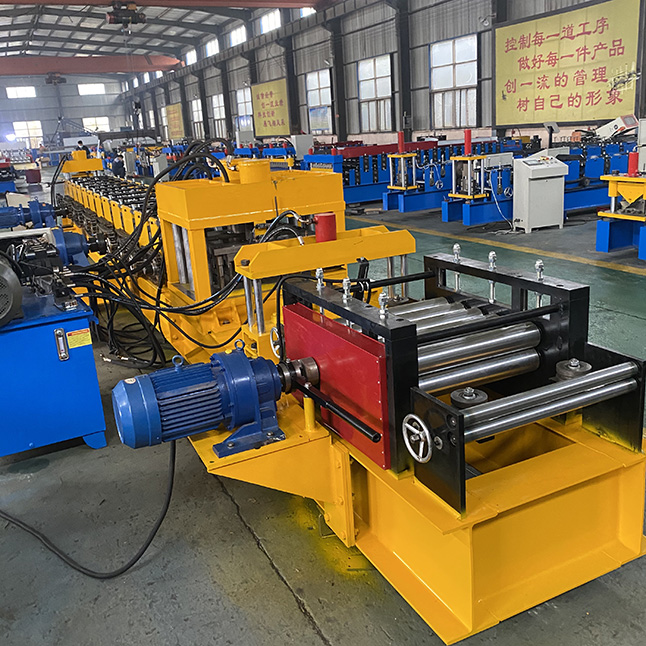
Price:
Detailed Introduction
 |  |
Highway guardrail equipment is a professional mechanical equipment used to produce highway guardrails, which is crucial to ensure the safety of highway driving. The following is a detailed introduction for you:
Main types and functions
Corrugated beam guardrail equipment
Function: Produce corrugated beam steel guardrail plates, which are the most common form of guardrails on highways. By processing the hot-dip galvanized steel plate or strip steel through a series of processes, it becomes a corrugated plate with a certain shape and size. After installation, it can effectively absorb and disperse the energy of vehicle collision, play a guiding and buffering role, and reduce the harm of accidents.
Production process: loading (steel coil) → uncoiling → leveling → punching → forming and rolling → shearing → finished product. In the uncoiling process, the steel coil is unfolded; leveling makes the surface of the steel plate flat; punching processes the holes required for installation; forming and rolling give the steel plate a corrugated shape; and finally shearing obtains a corrugated beam of a specified length.
Column equipment
Function: Manufacture columns for supporting corrugated beam guardrail plates. The columns must have sufficient strength and stability, and they must be driven or buried into the ground to provide reliable support for the guardrail plates.
Production process: Generally, round tubes or square tubes are welded into shape by high-frequency welding units, then cut to length, and then hot-dip galvanized to enhance corrosion resistance. Some also require special processing at the end, such as punching, flaring, etc., to facilitate connection with other parts.
Block block equipment
Function: Block blocks are important components that connect the columns and corrugated beams in corrugated beam guardrails. They can play a buffering and force transmission role when vehicles collide, so that the guardrail can better absorb the collision energy.
Production process: Steel plates are usually used as raw materials, and are processed into block blocks of specific shapes and sizes through stamping, bending and other processes, and then surface treated, such as galvanizing or spraying, to improve corrosion resistance.
Main components of the equipment
Unwinder
Function: Used to unfold steel coils so that the steel strip can continuously enter the subsequent processing procedures. Its tension control system can ensure the stability of the tension of the steel strip during the unwinding process, avoiding wrinkles, twists and other problems in the steel strip, which affect the quality of subsequent processing.
Leveling machine
Function: Level the steel strip after unwinding, eliminate the unevenness of the steel strip during rolling and transportation, ensure that the steel strip is in a flat state when entering the forming unit, and provide guarantee for subsequent precise forming.
Punching machine
Function: Punch out the holes required for installation on the steel strip according to the design requirements, such as the holes on the corrugated beam connected to the block and the column, and the holes on the column connected to the block. The punching accuracy directly affects the installation and matching accuracy of each component of the guardrail.
Forming unit
Function: This is the core part of the high-speed guardrail equipment. The steel strip is gradually rolled by multiple sets of rollers to gradually form the required shapes of corrugated beams, columns, etc. The design and processing accuracy of the rollers are crucial to the quality of product forming. Guardrail products of different specifications need to be equipped with corresponding forming units.
Cutting machine
Function: Cut the continuously formed guardrail products according to the set length to obtain finished products of specified size. The cutting accuracy affects the installation length accuracy and overall aesthetics of the product.
Control system
Function: Automatically control the operation of the entire highway guardrail equipment, including the start, stop, speed adjustment, fault diagnosis and alarm of each part. Advanced control systems can achieve precise control of the production process, improve production efficiency and product quality stability.
Technical parameters
Production speed: Generally around 5-15 meters per minute, and the production speed of equipment of different models and configurations varies. Higher production speed can improve production efficiency, but it is necessary to ensure that product quality is not affected.
Processing plate thickness: Common processing plate thickness ranges from 2.5-4.0 mm, which can be adjusted according to actual needs to meet the requirements of guardrail strength for highways of different grades.
Product specifications: Common specifications of corrugated beam guardrails include length 4320 mm, wave height 85 mm, etc.; column diameters are commonly 114 mm, 140 mm, etc., and the length is customized according to actual needs. The equipment should be able to flexibly produce products of various specifications to meet different engineering needs.
Equipment power: The overall equipment power is usually between 30-100 kilowatts, depending on factors such as the scale of the equipment, degree of automation and production capacity.
Maintenance and care points
Regular cleaning: During the production process, dust, oil and other impurities will adhere to the surface of the equipment. Regular cleaning can prevent them from entering the interior of the equipment and affecting the normal operation of the components. In particular, key parts such as the forming unit and rollers should be carefully cleaned to prevent impurities from wearing the equipment.
Lubrication and maintenance: Regularly adding lubricating oil or grease to the transmission parts of the equipment, such as chains, gears, bearings, etc., can reduce component wear, reduce equipment operating noise, and extend the service life of the equipment. The operation must be carried out in accordance with the lubrication cycle and lubricant model required by the equipment manual.
Check component wear: Frequently check the rollers, punching dies, cutting tools and other easily worn parts of the forming unit. If severe wear is found, they should be replaced in time to ensure the forming accuracy and cutting quality of the product. At the same time, check whether the bolts and nuts of each connection part are loose, and tighten them in time to prevent vibration during equipment operation and affect production.
Electrical system maintenance: Regularly check the electrical circuits to see if there is aging or damage, and replace problematic wires and cables in time. Check the electrical components in the electrical control cabinet to ensure that they are in good contact and there are no abnormal conditions such as overheating and sparking. Clean the dust in the control cabinet regularly to maintain a good heat dissipation environment.
Hydraulic system maintenance: If the equipment includes a hydraulic system, check the hydraulic oil level and oil quality regularly. Add oil in time when the oil level is insufficient, and replace it when the oil quality deteriorates. At the same time, check whether the hydraulic pipeline has leaks, and repair them in time if there are leaks.
Copyright © Cangzhou Guochen Cold Bending Machinery Equipment Co., Ltd. Rights Reserved Sitemap | Technical Support